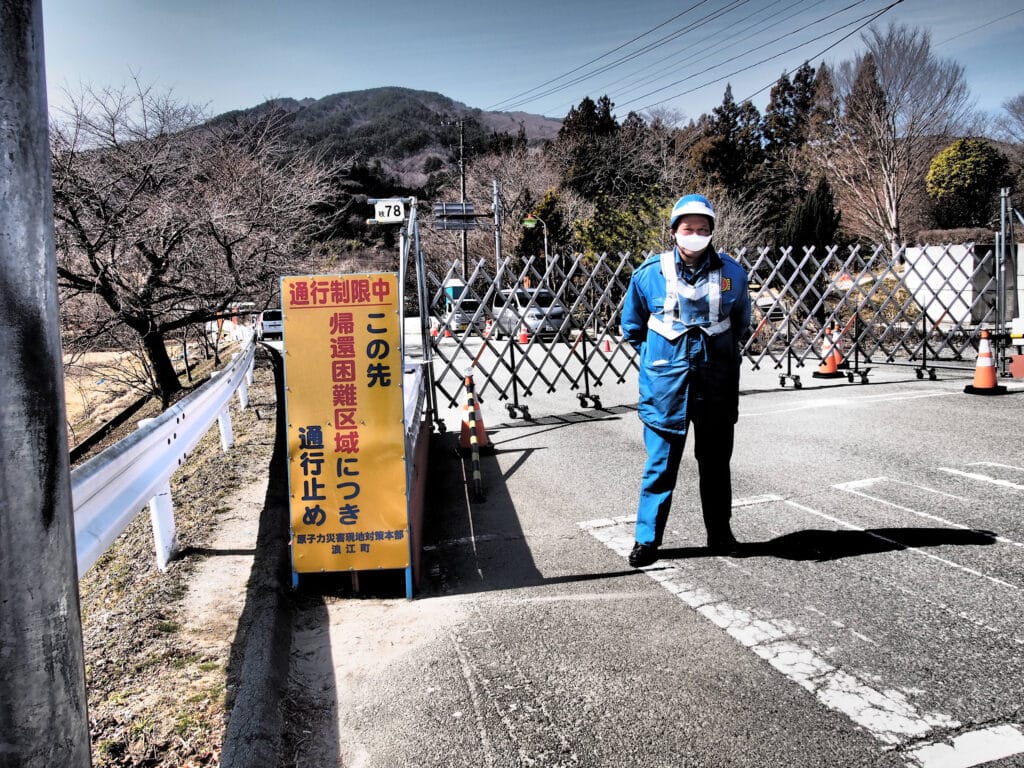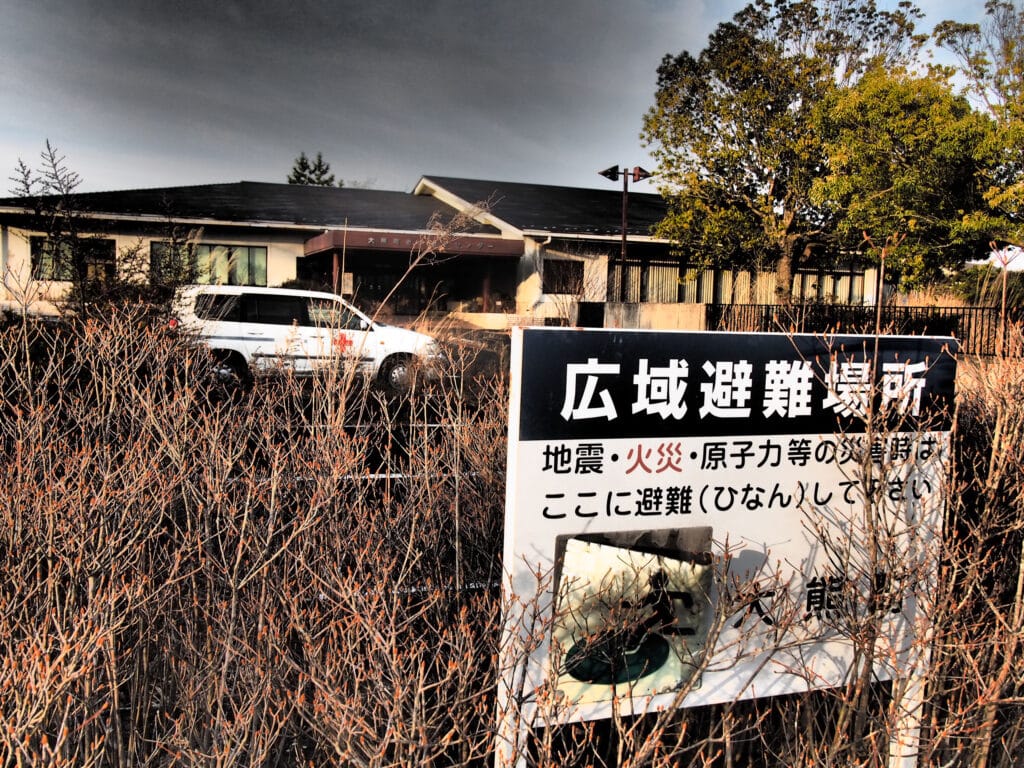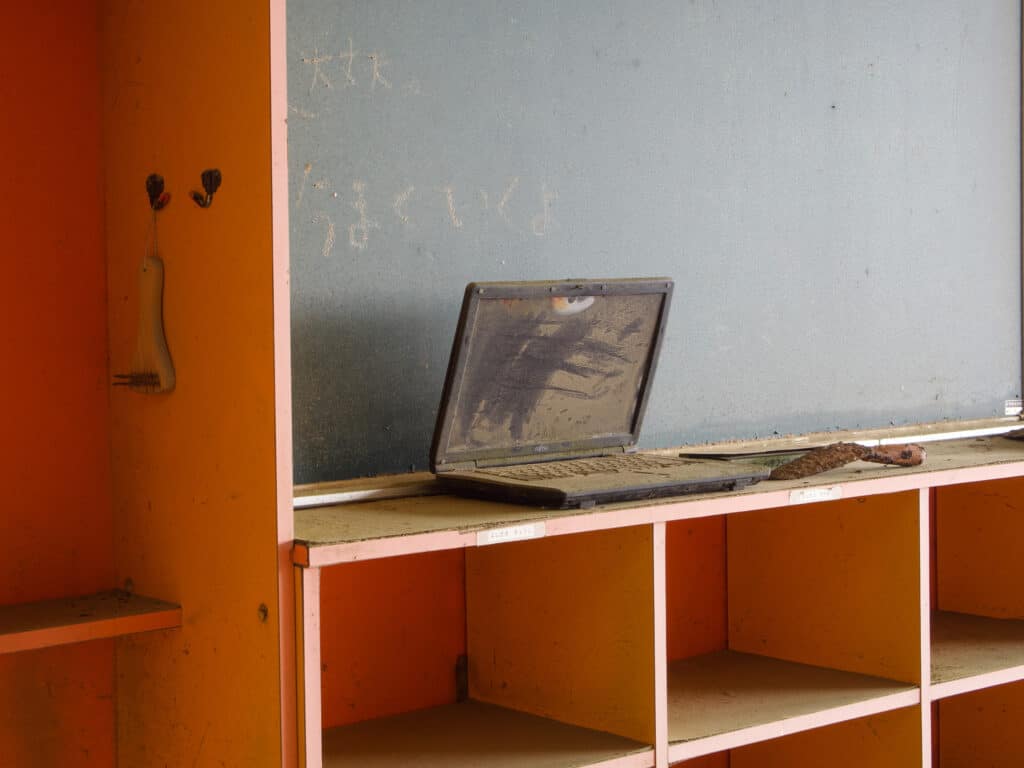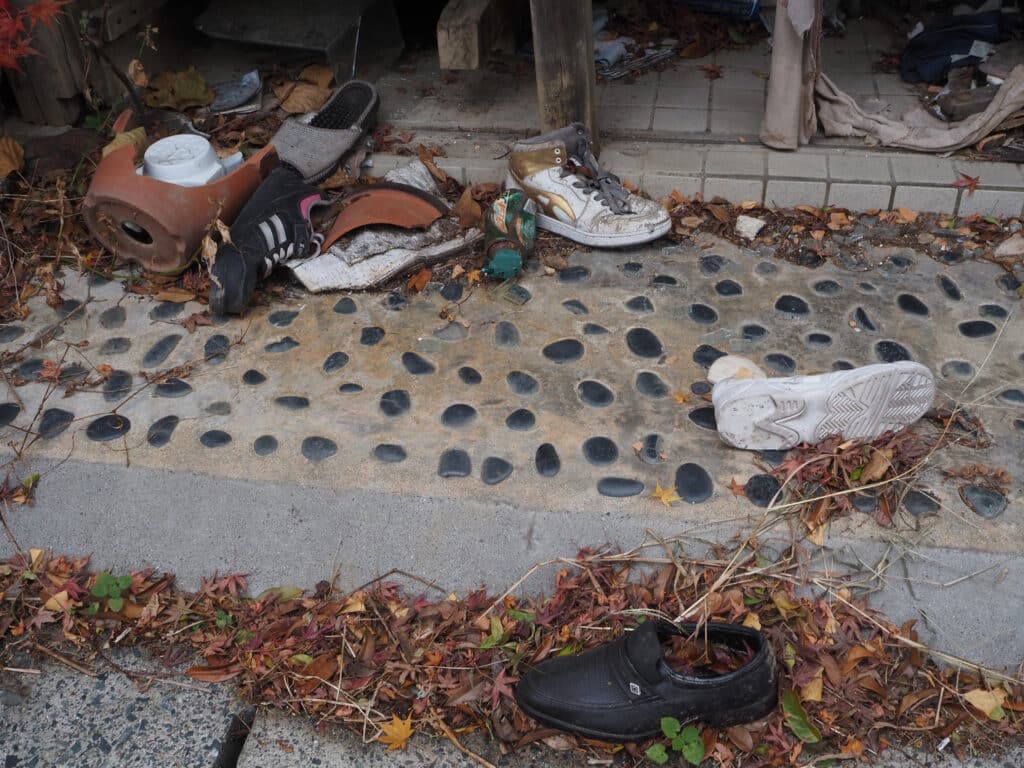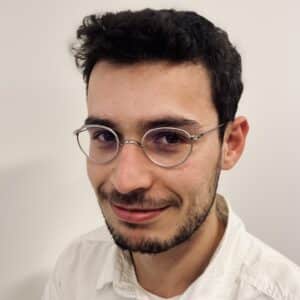Okaerinasai! “Welcome home” in Japanese. A phrase that Cécile Asanuma-Brice, the CNRS scientist behind the photographs, would like to nuance. She was in Japan at the time of the terrible earthquake and tsunami that caused the containment vessels of three of the six reactors at the Fukushima nuclear power station to explode in March 2011. She lived through the evacuation and has been visiting the site regularly for the past 12 years. For her, the return to the former evacuated zone, sometimes forced by the lifting of refuge subsidies, is the result of a political will that it is important to analyse.
“Les pires accidents nucléaires” (The worst nuclear accidents) was the headline in Le Point (a French media) in March 2011, three days after the accident, referring to Man’s lack of control over nuclear power. For its part, Le Monde (another French media) spoke of “an accident of historic proportions”. The media were inundated with articles and reports worrying about the possible repercussions and the future of the district. What are the risks associated with radioactivity? How should people evacuate, and in which areas? What is the threat to neighbouring countries and what is the danger to the local population? More than 22,000 people died as a result of this disaster, including the earthquake and tsunamis.
“The evacuation was complicated”, says Cécile Asanuma-Brice. “It was carried out in waves: first the residents living in the vicinity of the power station, then within a perimeter of 2 km, then 3, then 10, then 20, then 30”. Some households were moved a dozen times in less than two months. The displaced people, many of them elderly, were sometimes forced to sleep in their vehicles in the middle of winter. The deaths linked to this poorly organised evacuation were considerable, “which does not mean that it was not necessary to evacuate”.
Far from being evenly distributed, “the radionuclides were spread in a mosaic”. Some apparently remote localities may be more contaminated than others that are closer to the power station. This wave evacuation also sometimes led to people moving to “refuge” locations that were more polluted than their original place of residence. 160,000 people are officially displaced – not including those who have not registered with the prefecture as “refugees”, as they do not know whether this situation will be permanent. However, the work carried out by the team of researchers at Mitate lab (CNRS), co-directed by Cécile Asanuma-Brice and Olivier Evrard, leaves no doubt about the need to evacuate, given that contamination levels far exceed international standards, even today, in places and more permanently in the forest.
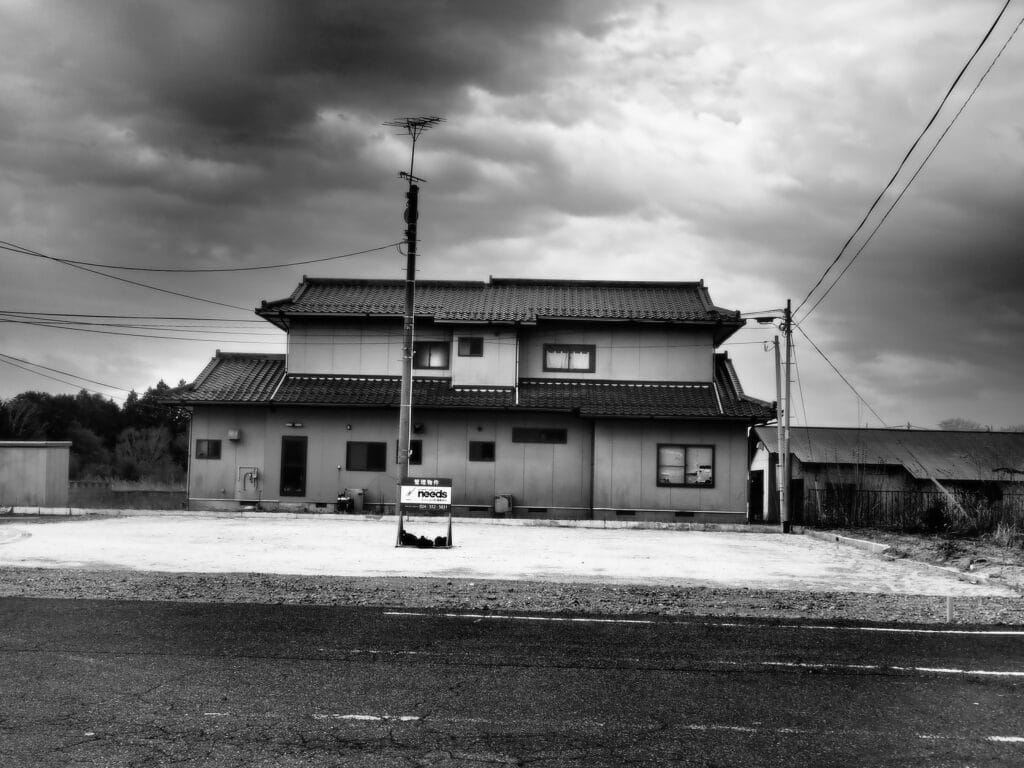
Photographic distancing
“Photography allows us to go beyond language, to capture their emotions, but also the soul of the places where they live”
Cécile Asanuma-Brice
Cécile Asanuma-Brice has been in the field for 12 years. Directly in the evacuated and polluted regions or in contact with the families and displaced people, she witnessed at first hand the turmoil and pain of these people. “Many have lost a member of their family, or even their whole family”, and their stories ” are often bordering on the unbearable”. She conducts interviews in temporary accommodation, provided by the state pending more permanent reconstruction.
Photography transmits additional information without analysing it. “It allows us to go beyond language, to capture their emotions, but also the soul of the places where they live”, something that, in her opinion, “only photography can capture”. Even today, after 12 years in the field, the scientist admits that she can’t go on site without her camera. It helps her to cope better with this reality, acting as a “filter between me and the outside world, a means of objectification”.
“Leaving a trace of this catastrophe” is also made possible by photography. “You can’t just sweep this reality under the carpet”, destroying the places where people used to live and rebuilding on top of them as if nothing had happened. “You live with it, but you don’t forget”, she insists. When the reconstruction and decontamination projects are complete, all that will remain are memories and images. In the long term, photographs will be as much a guarantee of this memory as the stories of the disaster.
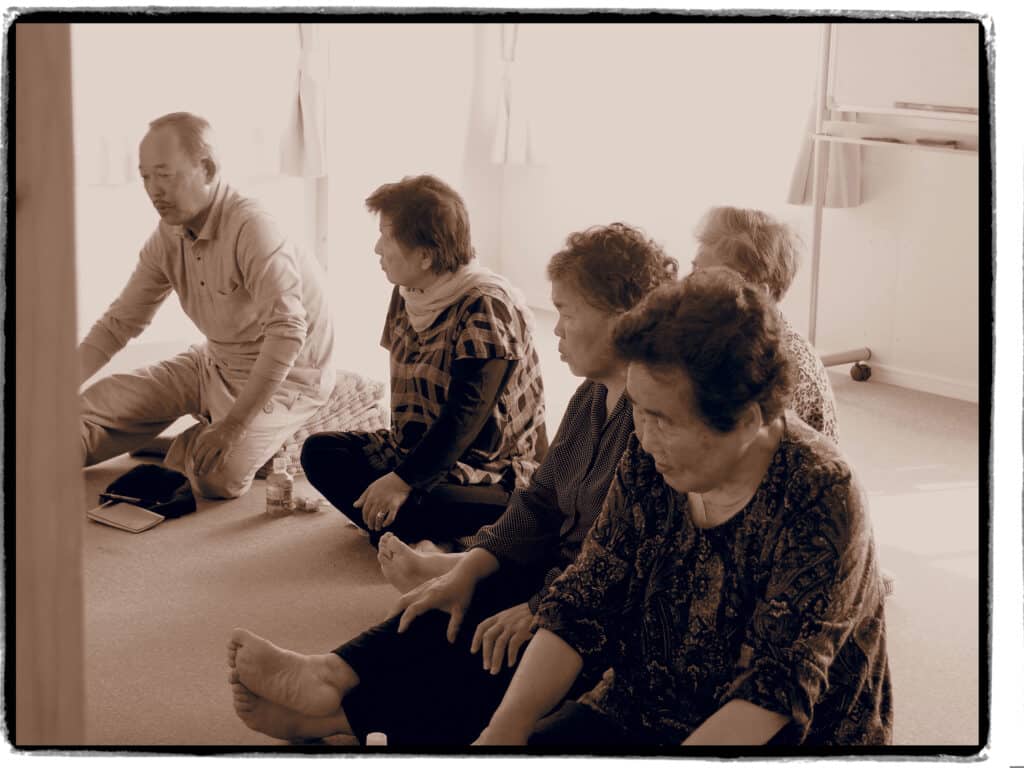
Okaeri – Welcome home
When he came to power in 2013, Japanese Prime Minister Shinzo Abe wanted to revive the Fukushima region, despite the contamination (mainly caesium 134 and 137). He is therefore launching a vast reconstruction planning project preceded by a €40 billion decontamination policy. A first in the world. Despite the scale of the project, it was limited to habitable areas (housing + 20m around each house) and arable land. “We don’t know how to decontaminate the forest”, explains the scientist, who points out that it represents three quarters of the territory of Fukushima prefecture.
“The government is offering financial support to anyone willing to move into the former evacuated zone,” explains Cécile Asanuma-Brice. In its bid to reinvest the area, the government is razing the existing buildings and replacing them with new town housing estates. The beauty, history and identity of the region that used to lie within these walls have been consigned to oblivion, to the deep regret of the displaced, who “no longer recognise anything” and “don’t want to go back”. In Ôkuma, a town just south of Fukushima and home to part of the nuclear power plant, 1,000 people have moved into the new housing estate built around the town hall. The population is mainly made up of 800 employees of Tepco, the Tokyo electricity company, which sends its employees there at the start of their careers. 100 people have moved there with public subsidies, and only a hundred others are originally from the region. Of this new population, which represents only a fraction of the original 8,000 inhabitants, only 10% have returned of their own free will.
“The whole area was already in demographic decline before the nuclear accident. The disaster was just a catalyst”, explains the expert. “In Namie (a town to the north-west of the Fukushima power station), almost a thousand people have left every year since 1995”. This raises the question of reconstruction and its usefulness. Wouldn’t it be better to let the region return to nature? Is it imperative to anthropise these areas? For the scientist, the answer is not self-evident. It makes you wonder if we should wish them a safe journey home. The traditional formula will have to wait a little longer.
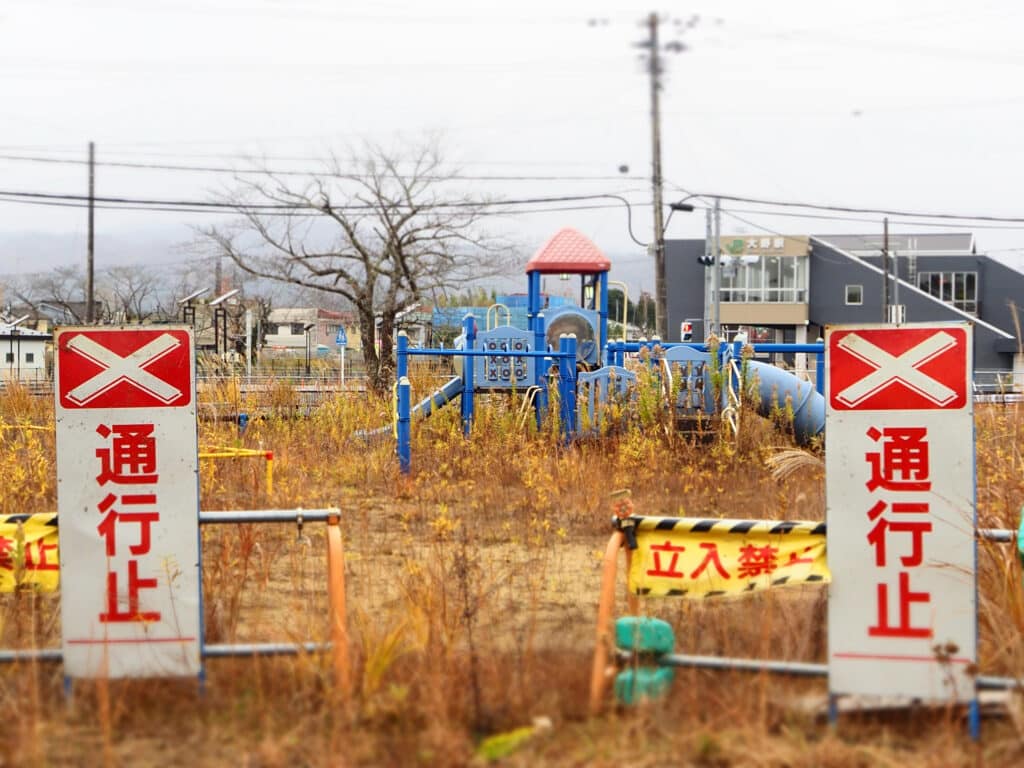
The exhibition Sur les traces de Fukushima (In the footsteps of Fukushima) is open at the Maison de la Culture du Japon in Paris until March 9, 2024. For a better understanding of the sequence of disasters, you can also read her book Fukushima, 10 ans après.

